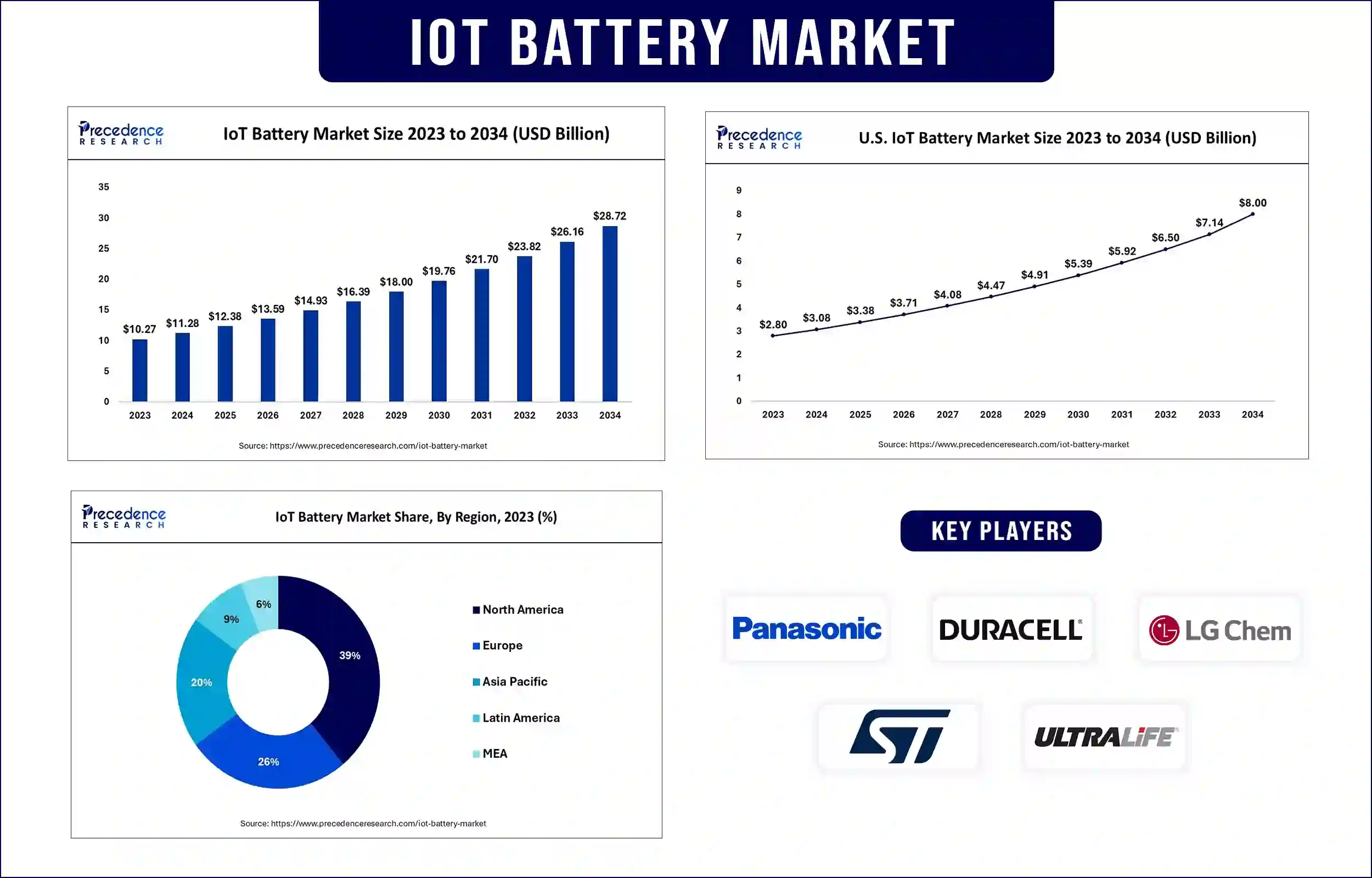November 2025
The global IoT battery market size accounted for USD 11.28 billion in 2024 and is expected to be valued at USD 28.72 billion by 2033, expanding at a CAGR of 9.80% from 2024 to 2033. The demand for IoT batteries is increasing rapidly due to the increasing adoption of IoT devices in various industries. Advancements in battery technology led to cost-effective and advanced batteries, making them suitable for long run.

IoT, or the Internet of Things, has become increasingly popular in recent years. Smart speakers, fitness trackers, smart home security equipment, and even smartphones are examples of IoT gadgets. These technological gadgets communicate with one another over the Internet and the cloud. Internet of Things (IoT) technology improvements may be slowed by power and battery issues. Therefore, in order to hold enough power to operate a device and not lose power over time, these IoT-based gadgets require high-capacity batteries and lengthy shelf lives. Because IoT devices are used in various industries, including consumer electronics, home automation, wearable technology, BFSI, retail, agriculture, aerospace & military, and healthcare, choosing the right battery is essential. This will ultimately help them to run for a longer duration while carrying out all the operations efficiently.
Advancements in Technology: Ongoing advancements in technology have shifted consumers’ focus on cutting-edge IoT batteries, such as Li-ion batteries, and thin-film batteries. These batteries offer an advantage over conventional batteries and are suitable for long run.
Growing Environmental Concerns: The growing environmental concerns across the world led to a revolution that has resulted in the development of eco-friendly batteries that are less harmful to nature and do not generate any waste. As a result, several bio-based batteries have come up in the market and are in high demand.
Expansion of IoT Devices: The market is flooded with various IoT-based devices that perform the functions smartly and can be operated with digital commands. As most of these devices require batteries for power, IoT batteries are in high demand, which has resulted in the mass production of IoT batteries that would ultimately boost the IoT battery market.
Rising Trend of Home Automation: IoT devices are gaining immense popularity in home automation due to the desire for energy-efficient solutions, improved security, greater venture capital financing, and the continual need to raise people's living standards. Building automation began with wired technology and is now in the wireless technology era, pleased with innovations in ZigBee, Wi-Fi, and Bluetooth Smart.
Adoption of IoT in the Healthcare Sector: The growth of computer-embedded technologies, wireless technology, and data analytics techniques like big data has recently brought about significant changes in the healthcare industry. By enabling the analysis of enormous amounts of complex medical data, including genetic data, bioinformatics, and metagenomics, IoT technologies are also transforming clinical research.
| Report Attribute | Key Statistics |
| Market Revenue in 2024 | USD 11.28 Billion |
| Market Revenue by 2033 | USD 26.16 Billion |
| CAGR | 9.80% from 2024 to 2033 |
| Quantitative Units | Revenue in USD million/billion, Volume in units |
| Largest Market | North America |
| Base Year | 2023 |
| Regions Covered | North America, Europe, Asia-Pacific, Latin America, and Middle East & Africa |
Segments covered in the report
By Type
By Rechargeability
By Application
Get this report to explore global market size, share, CAGR and trends, featuring detailed segmental analysis and an insightful competitive landscape overview@ https://www.precedenceresearch.com/checkout/2084
You can place an order or ask any questions, please feel free to contact at sales@precedenceresearch.com | +1 804 441 9344
November 2025
October 2025
July 2025
July 2025